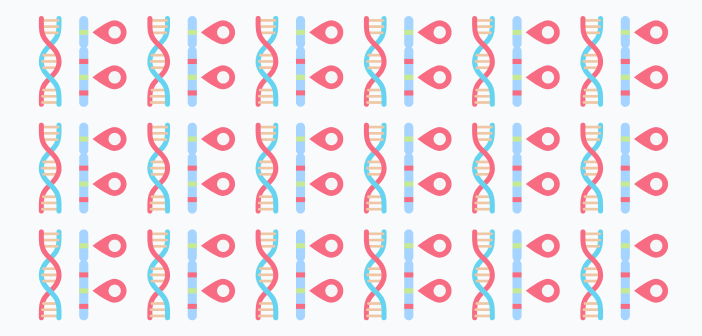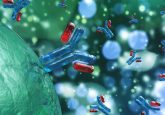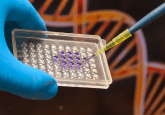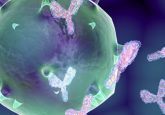Shaping gene and cell therapy innovations with bioanalysis: an interview with Boris Gorovits

Author: Boris Gorovits, VP of Non-clinical and Clinical Bioanalysis, Regeneron Pharmaceuticals (NY, USA)
 Boris Gorovits holds the position of VP of Non-clinical and Clinical Bioanalysis at Regeneron Pharmaceuticals, Inc. After obtaining a PhD in Enzymology, Boris joined the Protein Biophysics department at The University of Texas Medical Center, San Antonio (TX, USA). Boris’s industry experience includes working at Regeneron, Wyeth (PA, USA), Pfizer (NY, USA) and Sana Biotechnology (WA, USA) with the main focus on bioanalytical and PD support of various modalities of biotherapeutics, including support of discovery and regulated non-clinical and clinical studies. Boris has experience working with a diverse modality types of biotherapeutics, including mAbs, bispecifics, antibody-drug conjugates, AAVs and CAR-Ts. Boris is actively involved in industry conversations focusing on PK and immunogenicity assessments of various modalities, including gene therapy and CAR-T.
Boris Gorovits holds the position of VP of Non-clinical and Clinical Bioanalysis at Regeneron Pharmaceuticals, Inc. After obtaining a PhD in Enzymology, Boris joined the Protein Biophysics department at The University of Texas Medical Center, San Antonio (TX, USA). Boris’s industry experience includes working at Regeneron, Wyeth (PA, USA), Pfizer (NY, USA) and Sana Biotechnology (WA, USA) with the main focus on bioanalytical and PD support of various modalities of biotherapeutics, including support of discovery and regulated non-clinical and clinical studies. Boris has experience working with a diverse modality types of biotherapeutics, including mAbs, bispecifics, antibody-drug conjugates, AAVs and CAR-Ts. Boris is actively involved in industry conversations focusing on PK and immunogenicity assessments of various modalities, including gene therapy and CAR-T.
-
Please could you tell us a bit about yourself and provide a brief overview of your career to date?
I lead a fantastic team of scientists at Regeneron Pharmaceuticals (NY, USA), where we develop, validate and apply bioanalytical methods to support non-clinical and clinical studies for a wide range of complex biotherapeutics. With nearly 30 years in the field of bioanalysis of biologics, I’ve had the incredible opportunity to learn from some of the best minds in the industry. My journey began at UT San Antonio (TX, USA) as a postdoctoral fellow, diving into the fascinating world of protein folding and structure–function relationships. Transitioning to the drug development industry, I’ve worked at both small and large companies, focusing on bioanalytical assay development and associated study support. My experience covers a variety of modalities, including monoclonal antibodies, bispecific antibodies, antibody-drug conjugates, oligonucleotides, adenovirus-associated and lentivirus-based gene therapeutics and chimeric antigen receptor T-cell therapeutics. I’ve had the pleasure of working with discovery teams and those requiring stringent good laboratory practice (GLP) and good clinical laboratory practice (GCLP) support. Throughout my career, I’ve been fortunate to collaborate with bright and talented colleagues who have taught me so much about overcoming the challenges we face as bioanalytical scientists. My interactions with industry leaders and health authorities have given me a deeper insight into the complex world of drug development. Every step of this journey has been a learning experience, and I’m grateful for the opportunities to grow and contribute to this vital field.
-
What inspires you about working in the field of bioanalytical support for gene and cell therapies?
Gene and cell therapeutic modalities represent the future of medicine, and I am thrilled to be part of this groundbreaking development. While I don’t believe gene and cell therapies will completely replace established approaches like small molecule or monoclonal antibody-based therapeutics, I do see them offering new and exciting opportunities to treat diseases that were once considered untreatable, ultimately improving the lives of many patients. These modalities have the potential to bring cures and create miracles. The field of bioanalysis for gene and cell therapies is rapidly evolving, yet still in its infancy. There are many unanswered questions and complex challenges that require the collective effort of many creative minds. I find it incredibly exciting to be part of this growing and developing area of science, working alongside talented colleagues to push the boundaries of what is possible in medicine.
-
What assays do you use to monitor long-term safety, including immune responses, after gene therapy administration?
The collection of tests for long-term safety monitoring depends on the specifics of the gene-based therapeutic. Many details related to long-term monitoring are outlined in regulatory agency guidelines, such as the FDA’s guidance on Long-Term Follow-up After Administration of Human Gene Therapy Products. Specific assessments may include monitoring immune responses against the gene therapy vector or the transgene product. As always, monitoring should ensure that critical information necessary for maintaining patient safety is available.
-
Lack of regulatory guidance is a bioanalytical concern of developing AAV therapies. How do you assess the effectiveness of your current bioanalytical support services in meeting regulatory requirements?
Currently, it is true that we lack regulatory guidance documents specifically addressing the bioanalytical concerns of developing AAV therapies. However, there are numerous guidelines that outline health authorities’ positions on the development of gene and cell therapeutics. Some of these guidelines cover expectations for assessments and assays used in clinical trials, such as the evaluation of viral shedding and the potential impact of immune response development. Bioanalytical scientists working with other therapeutic modalities, including small molecular weight compounds and biotherapeutics, have access to specialized bioanalytical guidelines issued by various health authorities. Developing regulatory guidance requires significant effort, and it is understandable that specific bioanalytical guidelines for relatively novel modalities like AAV-based therapies may not yet exist. In the meantime, we can and should broadly apply existing guidance documents. For instance, FDA and EMA guidelines for methods designed to assess immune responses against biotherapeutics can be relevant. Additionally, we should be willing to engage with health authority agencies and continue to publish our data and ideas, thereby helping others advance in the development of this challenging modality.
-
Can you share a case where bioanalytical support played a critical role in the success of an AAV therapy development?
A notable example, though not from my own experience, highlights the critical importance of bioanalytical data for the success of AAV therapies. This example involves the development of Luxturna, an AAV2-based gene therapy (AAV2-hRPE65v2) designed to treat childhood-onset blindness caused by RPE65 mutations. As reported by Dr Bennett et al. , patients with inherited retinal dystrophy due to RPE65 mutations were initially treated with a unilateral subretinal injection of AAV2-hRPE65v2. Given the bilateral nature of the disease, it was crucial to assess the safety of treating the contralateral eye with AAV2-hRPE65v2. Clinical studies were conducted to address various safety and efficacy concerns, including the potential for an immune response against the AAV vector and the transgene protein, which could affect the safety and efficacy of a second administration. Robust immunogenicity testing methods revealed that no significant immunogenicity responses were detected. This, along with other assessments, allowed researchers to conclude that a repeat subretinal administration of the AAV2-based therapeutic could be used successfully. This case represents the first successful repeat administration of an AAV-based gene therapy, facilitated in part by access to immunogenicity data.
-
How do you see the future of bioanalytical support evolving for cell and gene therapies?
The industry is currently experiencing a rapid learning phase, and I anticipate that within a few years, we will identify the most critical bioanalytical questions that need to be addressed. In collaboration with health authorities, we will also establish appropriate expectations for the various required tests and may even see the issuance of specific guidelines, alongside numerous industry White Papers. I encourage everyone to share their knowledge for the benefit of patients.
Disclaimer: the opinions expressed are solely those of the author and do not express the views or opinions of Bioanalysis Zone or Taylor & Francis Group.






